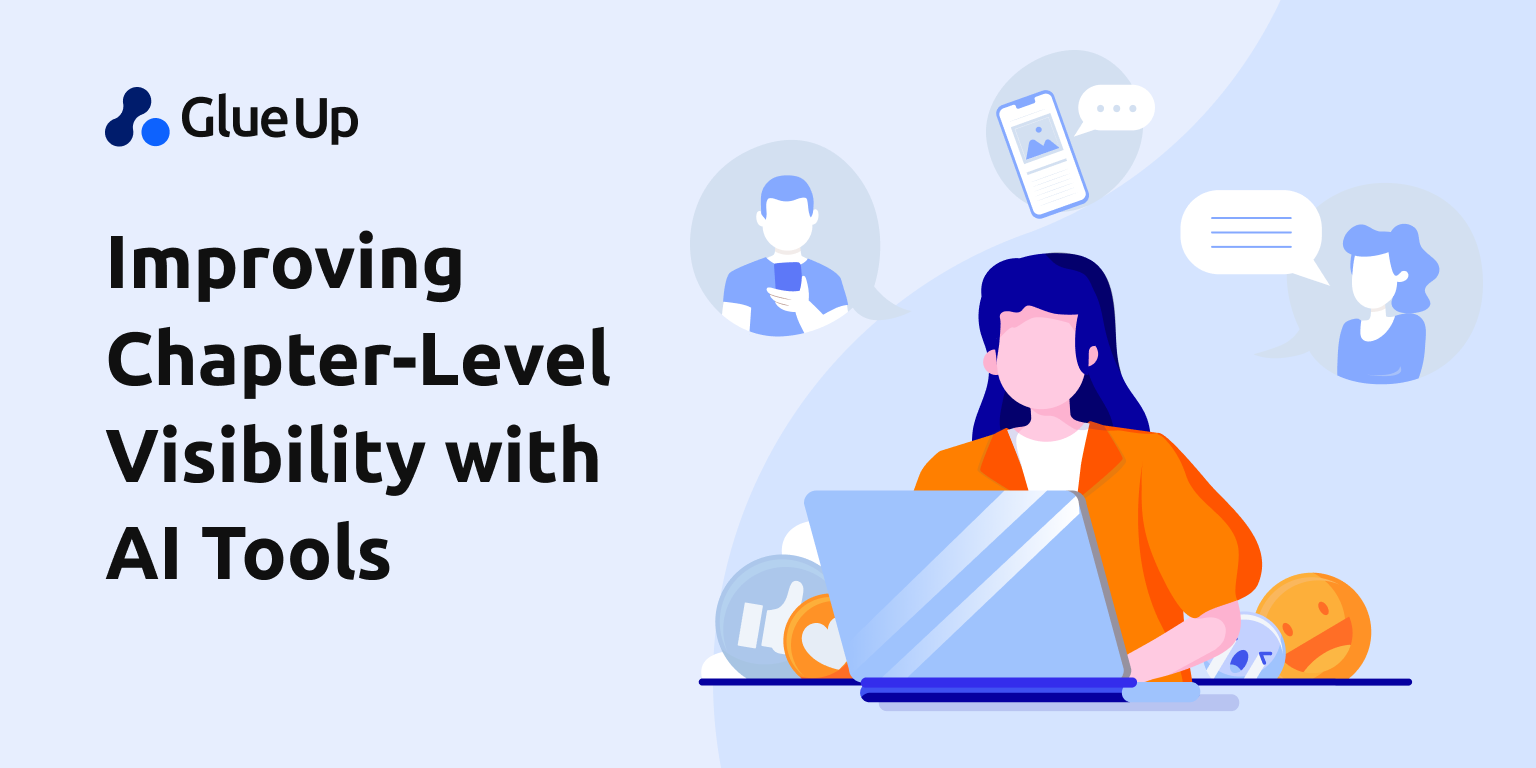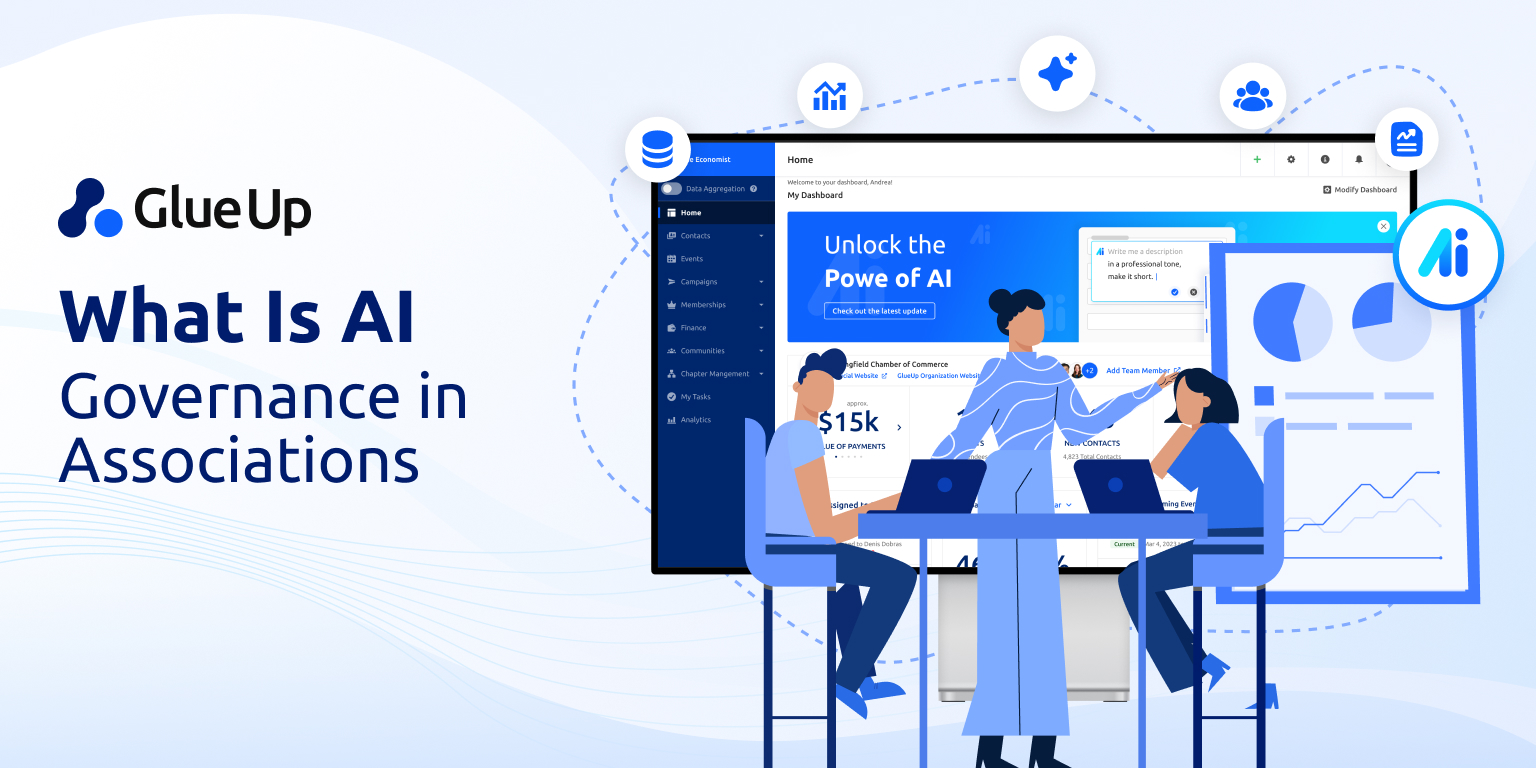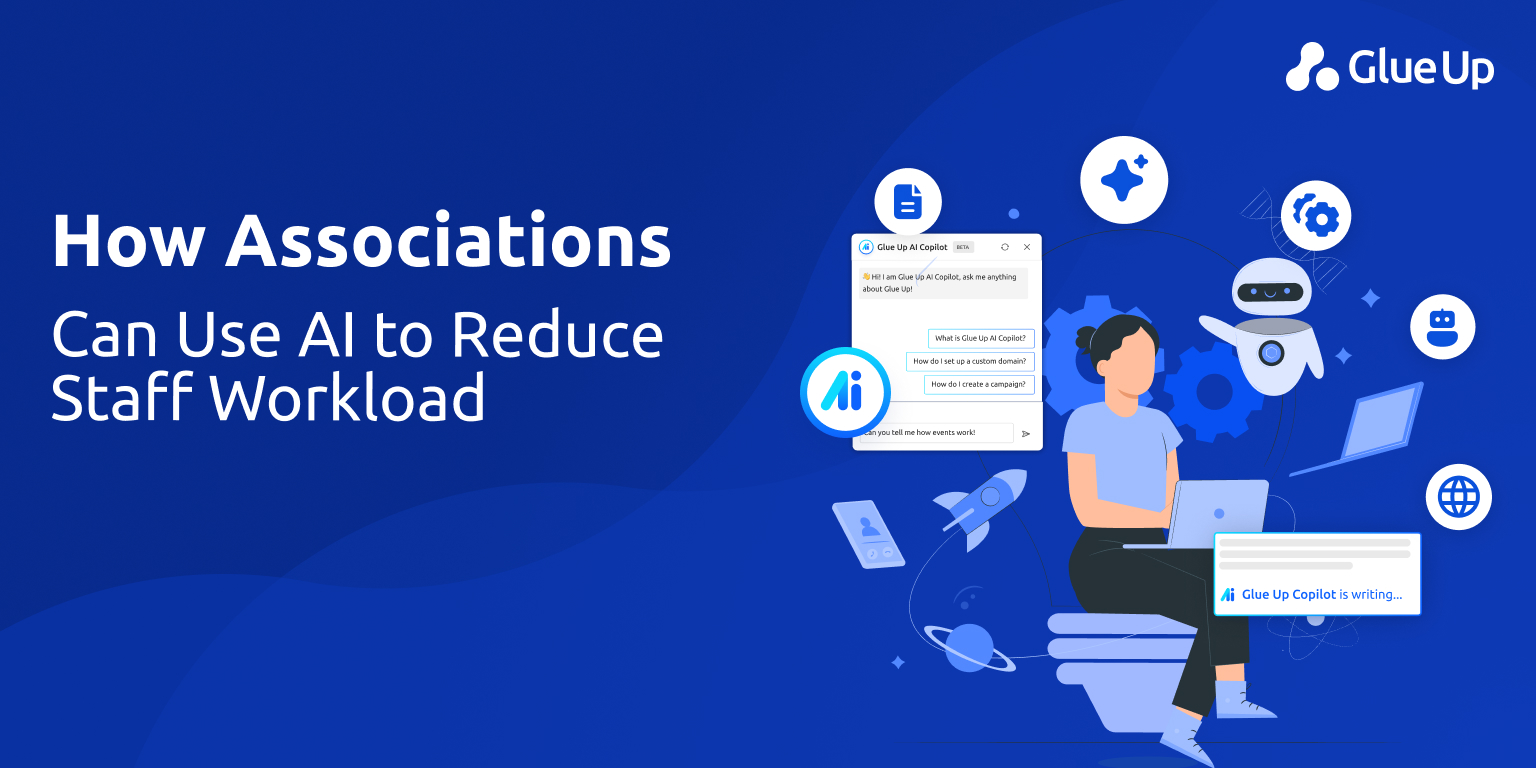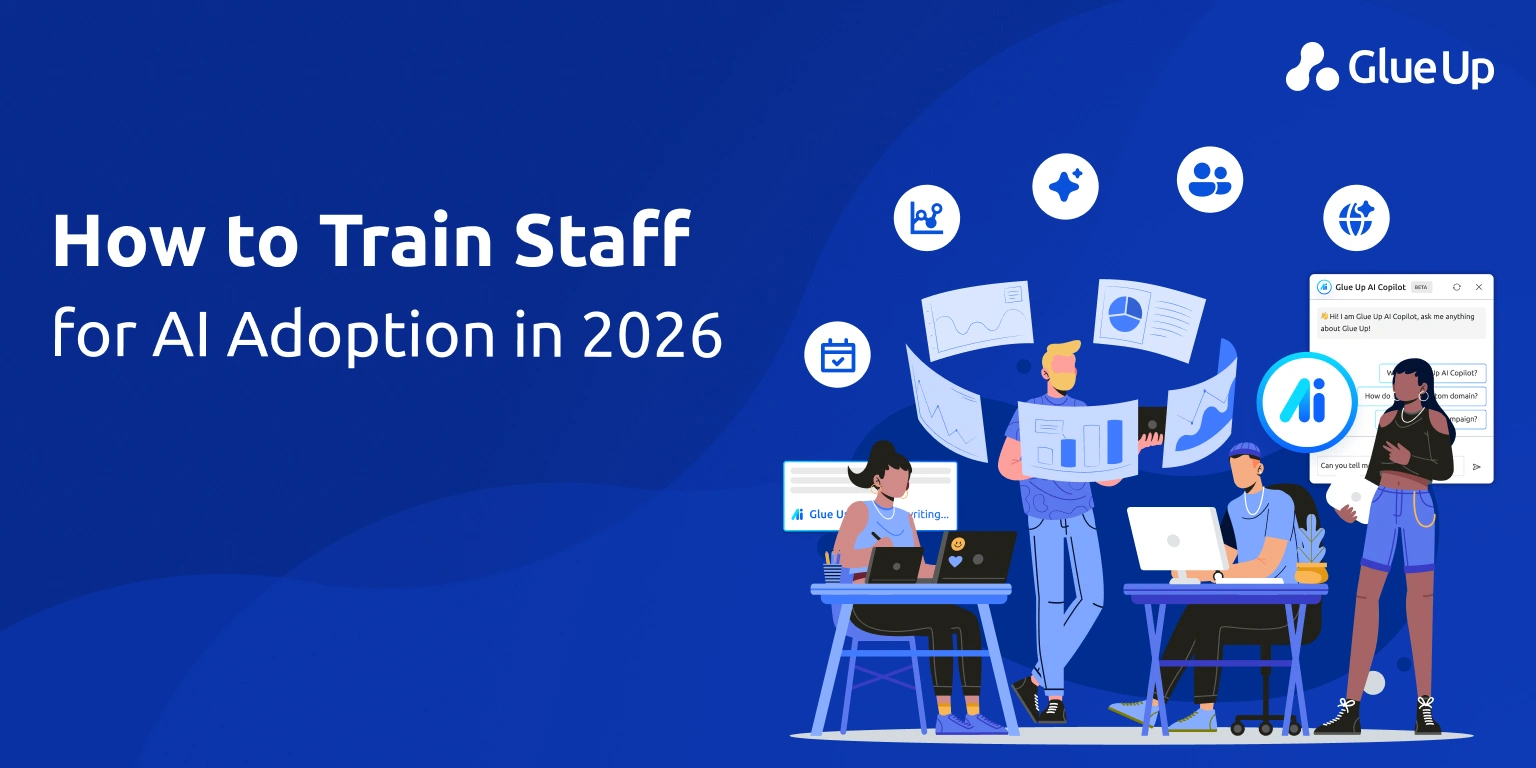
Running a multi-chapter organization comes with a unique challenge: visibility. Whether you're managing regional branches, city-based chapters, or distributed teams, keeping track of performance, engagement, and progress across locations often turns into a data nightmare.
Many associations, chambers, and multi-location nonprofits still rely on disconnected tools, manual spreadsheets, and inconsistent reporting processes. The result? Decision-makers are left in the dark, unable to compare performance, allocate resources effectively, or spot red flags before they become problems.
This isn’t just a workflow issue. It’s a strategic barrier. Without visibility, you're guessing where to focus, rather than acting on real insights.
That’s where AI and automation come in. These technologies are changing how organizations collect, analyze, and act on data across chapters. Instead of chasing spreadsheets or fragmented reports, leaders are using intelligent systems to unify their operations and drive smarter decisions.
In this blog, we’ll explore how AI and automation are helping organizations improve visibility at the chapter level, from solving reporting bottlenecks to predicting where support is needed most.
The Visibility Problem Across Chapters and Departments
When organizations grow across regions or chapters, visibility doesn’t scale as easily as people expect. In most cases, each chapter ends up using its tools, its data tracking methods, and its reporting cadence. The result? Fragmented operations and inconsistent insights.
Chapter leaders might be logging data into spreadsheets. Others might be sending in monthly updates via email. Some use tools that aren’t connected to the central system at all. By the time headquarters pulls it all together, the data is already outdated or, worse, incomplete.
This problem is especially acute for:
- Associations and chambers, where each chapter has its membership, events, and outreach efforts
- Multi-location nonprofits, where program reporting varies widely
- Training networks, where tracking learning outcomes across regions can be hit or miss
These organizations are often buried in manual reporting. Leaders want to see engagement trends, funding impact, or event performance, but they end up getting summaries that don’t compare apples to apples.
That’s why automation is no longer optional. (And yes, this is where the “automation what is” concept becomes real.) Automation means standardizing how information is gathered and shared, reducing the lag, error, and guesswork that manual systems create.
If you can’t see what’s happening across chapters in real time, you can’t lead in real time. And that’s the core problem AI and automation are built to solve.
How AI and Automation Improve Organizational Oversight
Traditional reporting systems can tell you what happened, but not always why it happened, or what to do next. That’s where AI and automation change the game.
Let’s start with the difference:
- Automation handles repetitive tasks like gathering reports, updating dashboards, or sending reminders.
- AI brings intelligence by analyzing data patterns, flagging anomalies, and surfacing recommendations you might miss on your own.
When used together, they form the backbone of intelligent automation, a system that not only saves time but also actively helps leaders make better decisions.
For example:
- A central dashboard auto-generates after each chapter’s events, showing attendance, revenue, and feedback all pulled from connected systems.
- AI then analyzes that data to detect which chapters are underperforming, which events drive higher engagement, or where resource allocation might be falling short.
Here’s how different types of organizations benefit:
- Associations and chambers: Track member engagement, event ROI, and chapter activity levels in real time.
- Corporations and consultancies: Compare performance across offices or regions with consistent KPI dashboards.
- Nonprofits and training providers: Understand program outcomes and funding impact without waiting weeks for manual updates.
The power here isn’t just in having more data, it’s in having clearer, faster answers.
When you pair automation’s efficiency with AI’s pattern recognition, you unlock visibility that helps you move faster, act sooner, and stay aligned across every chapter or region.
Use Cases of AI and Automation in Chapter Operations
Once you understand the strategic value of AI and automation, the next question is: How do you actually use it across chapters? Here are some real-world (and realistic) ways organizations are applying these tools to improve chapter-level operations:
Automation in Action
- Auto-generated performance reports: Chapters no longer need to manually submit spreadsheets. The system pulls data from events, registrations, and member activity to generate consistent reports for leadership, on schedule, every time.
- Member communications: Automate welcome emails, renewal reminders, and feedback requests so each chapter stays engaged without lifting a finger.
- Survey feedback aggregation: Instead of tracking results in scattered forms, responses are compiled and visualized automatically, making it easier to compare satisfaction or impact across chapters.
AI-Powered Insights
- Predicting low-performing chapters: AI looks at engagement trends, missed milestones, and drop-offs to flag chapters that may need extra support, before they hit a crisis point.
- Optimizing resource allocation: If one region consistently struggles with event attendance while another thrives, AI can suggest where to shift marketing budgets or staff time.
- Content and programming recommendations: Based on member behavior in one chapter, AI can suggest topics that may resonate in similar chapters with matching profiles.
Scenario Example
Imagine a state-wide chamber of commerce running 15 city chapters. With AI and automation:
- Leadership gets a weekly dashboard showing which chapters are growing, which need help, and where events are underperforming.
- The system flags that three chapters had low turnout for a recent training session and automatically suggests audience segments that responded better elsewhere.
- Meanwhile, members in every city receive tailored event invites, renewal prompts, and surveys, all of which are triggered automatically based on their activity.
This is operational intelligence. It’s not about replacing people; it’s about giving your chapters the tools to do more with less.
AI or Automation? How to Choose the Right Fit
AI and automation are often confused, but they’re not the same. Understanding their differences (and how they complement each other) is key to making smart technology choices for your organization.
Here’s the breakdown:
- Automation is best for structured, repetitive tasks. Examples include generating reports, sending reminders, logging attendance, and syncing data between systems.
- AI adds intelligence. It analyzes large volumes of data, identifies trends, predicts outcomes, and makes recommendations, especially in areas where human oversight alone would miss the signal.
So, when should you use each?
Use automation when | Use AI when |
You want to eliminate manual, routine processes | You need to spot patterns or trends across chapters |
Your team spends hours formatting reports | You want to predict which chapters need intervention |
You’re trying to improve communication workflows | You want recommendations based on behavior and performance data |
In most cases, the best results come from using AI and automation together. That’s what gives you intelligent workflows where repetitive tasks are handled for you and insights are delivered to help you make better decisions.
And if you're worried about the learning curve, don’t be. Many modern platforms, like Glue Up, are built to layer these technologies gradually. You can start with simple automations and grow into more advanced AI-powered features over time.
Bottom Line?
Don’t choose one over the other. Choose the right tool for the job, and when in doubt, combine both to maximize impact.
Ready to Move Beyond Manual Tracking? Glue Up Is Built for That
If you're still relying on spreadsheets, email threads, and disconnected tools to manage your chapters, you're not just working harder; you’re working blind. Manual tracking makes it nearly impossible to get a real-time view of what's happening across chapters, let alone respond strategically.
Glue Up’s Chapter Management software is purpose-built to fix that.
With visibility, control, and automation designed specifically for multi-tiered organizations, Glue Up helps you monitor performance, manage members, and engage communities all from one platform.
Here’s how Glue Up gives you the visibility you’ve been missing:
- Unified dashboard for every chapter: No more chasing down reports. Get a clear view of chapter activity, performance, and engagement in one place.
- Custom access and visibility settings: Whether you manage national, regional, or local chapters, Glue Up adapts to your structure without confusion.
- Real-time mobile access: Use the Glue Up Manager App to manage chapters and stay in sync with your team from anywhere.
- One connected community: Members across chapters can chat, post, exchange business cards, and access updates through a private online space that keeps them engaged and informed.
- Smart membership workflows: Automate onboarding, renewals, and member tracking at both chapter and national levels, with consistent data synced across your entire organization.
Whether you’re running five chapters or 50, Glue Up brings structure, insight, and simplicity to managing them all without the learning curve.
Book a demo today and see how Glue Up helps you unify, track, and grow every chapter in your network.



